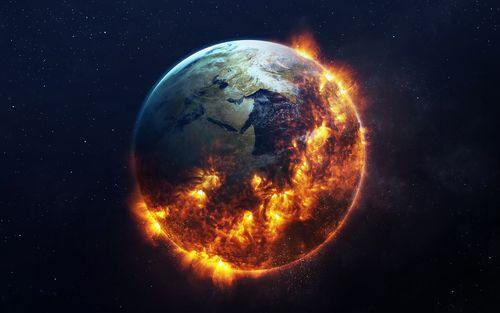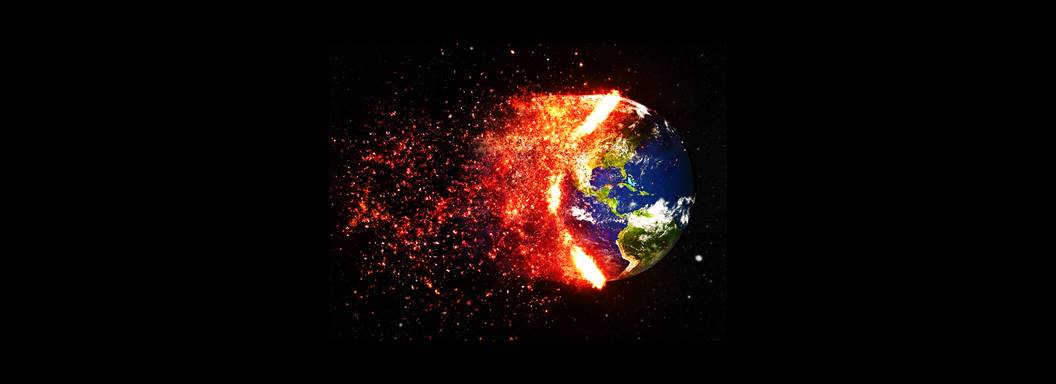Oceans of the World
The unexplored & undiscovered world underwater

The World Ocean or Global Ocean is the interconnected system of Earth’s oceanic waters,
and comprises the bulk of the hydrosphere, covering 361,132,000 km² (70.8%) of Earth’s surface,
with a total volume of roughly 1,332,000,000 km³.

There are 5 major oceanic divisions
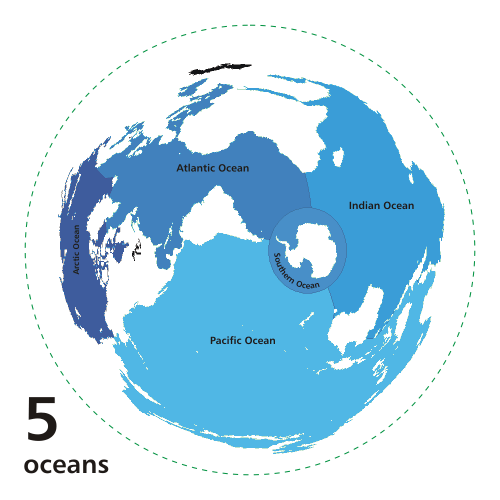
| Ocean | Area (%) | Avg. Depth (km) | Coastline (km) |
|---|---|---|---|
| Pacific Ocean | 46.6% | 3.97 | 135,663 |
| Atlantic Ocean | 23.5% | 3.646 | 111,866 |
| Indian Ocean | 19.5% | 3.741 | 66,526 |
| Southern Ocean | 6.1% | 3.270 | 17,968 |
| Arctic Ocean | 4.3% | 1.205 | 45,389 |
Scientists have successfully photographed a black hole, landed rovers on Mars,
and sent spacecraft to the dark side of the moon.
Yet more than 80% of our ocean is unmapped, unobserved, and unexplored.

Why are oceans the least understood
place on earth?
The ocean, at great depths, is characterized by
zero visibility, extremely cold temperatures, and crushing amounts of pressure.
As per Dr. Gene Carl Feldman, an oceanographer at NASA –
“In some ways, it’s a lot easier to send people into space than it is to send people to the bottom of the ocean.
The intense pressures in the deep ocean make it an extremely difficult environment to explore.”
Although you don’t notice it, the pressure of the air pushing down on your body at sea level is about 15 pounds per square inch. If you went up into space, above the Earth’s atmosphere, the pressure would decrease to zero. However, if you went diving or hitched a ride in an underwater vehicle, those forces would start to stack up the further down you went.
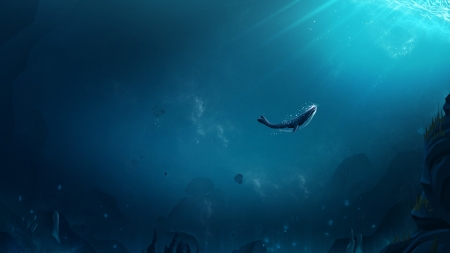
Species living in the ocean
Given the vast size of the ocean,
the number of species that live in the ocean is unknown.
Scientists estimate that 91% of ocean species
have yet to be classified, and that
95% of the ocean remains unexplored.

The planet’s longest mountain range is underwater

A mid-ocean ridge (MOR) is a seafloor mountain system formed by plate tectonics.
It typically has a depth of ~ 2,600 mtr (8,500 ft) and rises about two kilometers above the deepest portion of an ocean basin.
This feature is where seafloor spreading takes place along a divergent plate boundary. The rate of seafloor spreading determines the morphology of the crest of the mid-ocean ridge and its width in an ocean basin. The production of new seafloor and oceanic lithosphere results from mantle upwelling in response to plate separation. The melt rises as magma at the linear weakness between the separating plates, and emerges as lava, creating new oceanic crust and lithosphere upon cooling.
The first discovered mid-ocean ridge was the Mid-Atlantic Ridge, which is a spreading center that bisects the North and South Atlantic basins; hence the origin of the name ‘mid-ocean ridge’. Most oceanic spreading centers are not in the middle of their hosting ocean basis but regardless, are traditionally called mid-ocean ridges. Mid-ocean ridges around the globe are linked by plate tectonic boundaries and the trace of the ridges across the ocean floor appears similar to the seam of a baseball.
The mid-ocean ridge system thus is the longest mountain range on Earth,
reaching about 5,000 km (40,000 mi).

The Pacific is wider than the moon
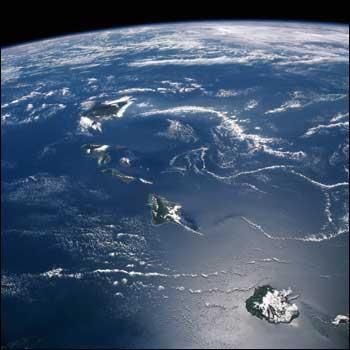
At its widest point, from Indonesia all the way to Colombia,
the Pacific Ocean is wider than the moon.
This expanse of ocean is 12,300 miles across,
which is more than five times the diameter of the moon!

The deepest places on earth is in the Pacific Ocean

The Mariana Trench or Marianas Trench, located in the western Pacific Ocean,
is the deepest oceanic trench on Earth.
The max known depth is 36,037 ft (± 82 ft) at the southern end of a small slot-shaped valley in its floor known as the Challenger Deep.
If Mount Everest were placed into the trench at this point, its peak would still be over 2 kms under water.
At the bottom of the trench the water column above exerts a pressure more than 1,071 times the standard atmospheric pressure at sea level.
At the bottom of the trench the water column above exerts a pressure of 1,086 bars (15,750 psi),
more than 1,071 times the standard atmospheric pressure at sea level. At this pressure, the density of water is increased by 4.96%.
The temperature at the bottom is 1 to 4 °C (34 to 39 °F).
In 2009, the Marianas Trench was established as a United States National Monument. Monothalamea have been found in the trench by Scripps Institution of Oceanography researchers at a record depth of 10.6 kilometres (6.6 mi) below the sea surface. Data has also suggested that microbial life forms thrive within the trench.

Other amazing facts about the ocean!
The world’s largest waterfall is in the ocean beneath the Denmark Strait, which separates Iceland and Greenland.
The height of the Denmark Strait cataract is ~11,500 ft.
By comparison, the largest waterfall on land, Angel Falls in Venezuela, is 3,212 ft.

Zhemchug Canyon, an underwater canyon located in the middle of the Bering Sea, is the deepest canyon in the ocean.
With a vertical relief of 8,530 ft dropping from the shallow shelf of the Bering Sea to the depths of the Aleutian Basin,
Zhemchug Canyon is deeper than the Grand Canyon which is 6,093 ft deep.

90% of all the volcanic activity on the planet happens in the ocean,
and the largest known concentration of active volcanoes is in the South Pacific.
It’s an area no bigger than the size of New York, but it contains a whopping 1,133 volcanoes.

In the deep ocean, a tsunami can move as fast as a jet plane,
over 500 mph, and its wavelength, the distance from crest to crest, may be hundreds of miles.

In human history, just 3 people have managed to make it to the Mariana Trench,
because of the extreme conditions there.
One of those people is film director James Cameron.

References :
https://bestlifeonline.com/crazy-ocean-facts/
https://en.wikipedia.org/wiki/World_Ocean
https://en.wikipedia.org/wiki/Ocean
https://oceanservice.noaa.gov/facts/exploration.html
https://oceana.org/blog/why-does-so-much-ocean-remain-unexplored-and-unprotected
https://en.wikipedia.org/wiki/Mid-ocean_ridge
https://en.wikipedia.org/wiki/Mariana_Trench
https://oceanservice.noaa.gov/facts/largest-waterfall.html
https://en.wikipedia.org/wiki/Zhemchug_Canyon
https://www.noaa.gov/education/resource-collections/ocean-coasts/tsunamis

